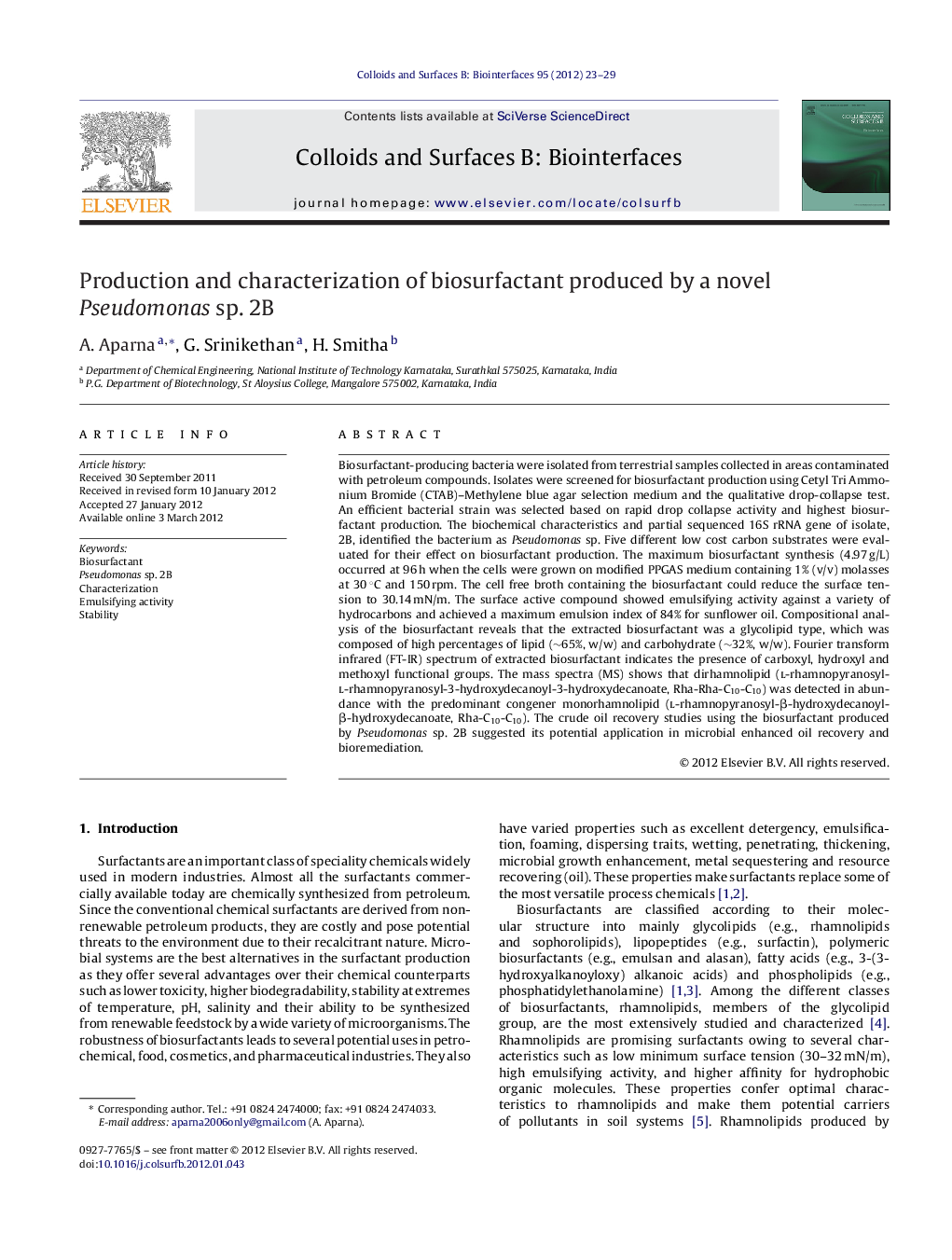| کد مقاله | کد نشریه | سال انتشار | مقاله انگلیسی | نسخه تمام متن |
|---|---|---|---|---|
| 600742 | 1454309 | 2012 | 7 صفحه PDF | دانلود رایگان |

Biosurfactant-producing bacteria were isolated from terrestrial samples collected in areas contaminated with petroleum compounds. Isolates were screened for biosurfactant production using Cetyl Tri Ammonium Bromide (CTAB)–Methylene blue agar selection medium and the qualitative drop-collapse test. An efficient bacterial strain was selected based on rapid drop collapse activity and highest biosurfactant production. The biochemical characteristics and partial sequenced 16S rRNA gene of isolate, 2B, identified the bacterium as Pseudomonas sp. Five different low cost carbon substrates were evaluated for their effect on biosurfactant production. The maximum biosurfactant synthesis (4.97 g/L) occurred at 96 h when the cells were grown on modified PPGAS medium containing 1% (v/v) molasses at 30 °C and 150 rpm. The cell free broth containing the biosurfactant could reduce the surface tension to 30.14 mN/m. The surface active compound showed emulsifying activity against a variety of hydrocarbons and achieved a maximum emulsion index of 84% for sunflower oil. Compositional analysis of the biosurfactant reveals that the extracted biosurfactant was a glycolipid type, which was composed of high percentages of lipid (∼65%, w/w) and carbohydrate (∼32%, w/w). Fourier transform infrared (FT-IR) spectrum of extracted biosurfactant indicates the presence of carboxyl, hydroxyl and methoxyl functional groups. The mass spectra (MS) shows that dirhamnolipid (l-rhamnopyranosyl-l-rhamnopyranosyl-3-hydroxydecanoyl-3-hydroxydecanoate, Rha-Rha-C10-C10) was detected in abundance with the predominant congener monorhamnolipid (l-rhamnopyranosyl-β-hydroxydecanoyl-β-hydroxydecanoate, Rha-C10-C10). The crude oil recovery studies using the biosurfactant produced by Pseudomonas sp. 2B suggested its potential application in microbial enhanced oil recovery and bioremediation.
Figure optionsDownload as PowerPoint slideHighlights
► We investigate the utilization of low cost carbon sources for biosurfactant production by a novel bacterium Pseudomonas sp. 2B.
► We determine the structure of the biosurfactant type by FT-IR and LC–MS analysis.
► We examine the effect of various environmental factors on the biosurfactant stability.
► The isolated biosurfactant finds application in recovery of oil and bioremediation.
Journal: Colloids and Surfaces B: Biointerfaces - Volume 95, 15 June 2012, Pages 23–29